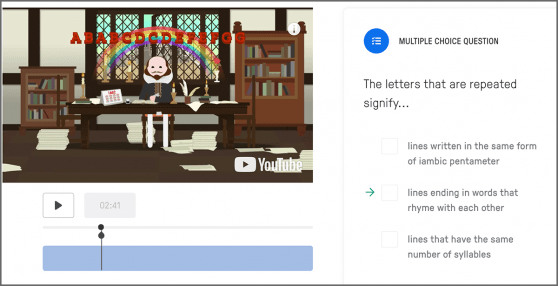While Google Classroom is a powerful platform for online teaching and learning, it can become monotonous for students and teachers alike. Staring at text on a screen all day is difficult. Formats like digital slideshows aren't interactive and rarely provide opportunities for students to add their own ideas and feedback. Fortunately, there are a number of highly engaging online resources to help increase student engagement. Here are three tools teachers can use to bring a jolt of excitement to their virtual classrooms. All are easy to use, good for any grade level and subject area, and work well alongside and within Google Classroom.
FlipGrid
If your students like TikTok (and chances are good they do), they'll also like using FlipGrid. You can post an assignment or question for your students and, in turn, they can make their own short videos in response. FlipGrid, which is free for educators, is good for that student who keeps their video camera off during Zoom calls but might become less shy and more creative when they're able to craft something to their own liking and at their own pace. It's a great tool for student voice, so it lends itself to activities like writing reflections, creating a collaborative story or adding an idea to a discussion or debate. But since it's also a video format, FlipGrid can let students "participate" in virtual physical education, art and music classes.
Pear Deck
It's not hard to see why Pear Deck has become popular with many educators. The tool has ready-to-use templates that allow students to directly enter feedback, respond to quizzes, drag and arrange images or use drawing tools. Pear Deck also lets teachers record their voices — great for doing read-alouds, practicing listening skills, providing instructions and helping students who may be learning English or are struggling readers. The tool is easy to use and integrates seamlessly with Google Classroom — "decks" are created directly in Google Drive. You can download Pear Deck directly from Google Classroom and get working right away. Pear Deck is free at a basic level, but if it is a tool you envision you and your colleagues using, ask your principal about obtaining a school account, which provides more options.
EdPuzzle
Many teachers assign video clips for students to watch as part of remote learning, but unless the material is extremely engaging, the students can zone out in the same way they would watching a slideshow. EdPuzzle lets teachers make videos interactive by inserting text or sound directly within videos. Teachers can use videos from a number of different sources, such as YouTube, TED Talks and Khan Academy, or they can make their own videos. Then you can customize the video to your students' needs by inserting critical thinking questions, translations or assessments or even by adding your own voice to make comments. EdPuzzle, which is free for educators, also tracks how many students watched a particular video as well as when and for how long. It also tracks students' right and wrong answers for any assessments you include.
These three tools are easy to learn, but you can find plenty of tutorials online if you need extra guidance. For a list of other sites you can use to make your remote classroom more interactive, visit the remote teaching section of the UFT website.
Sandy Scragg is an instructional technology specialist with more than 15 years of experience in New York City public schools.
